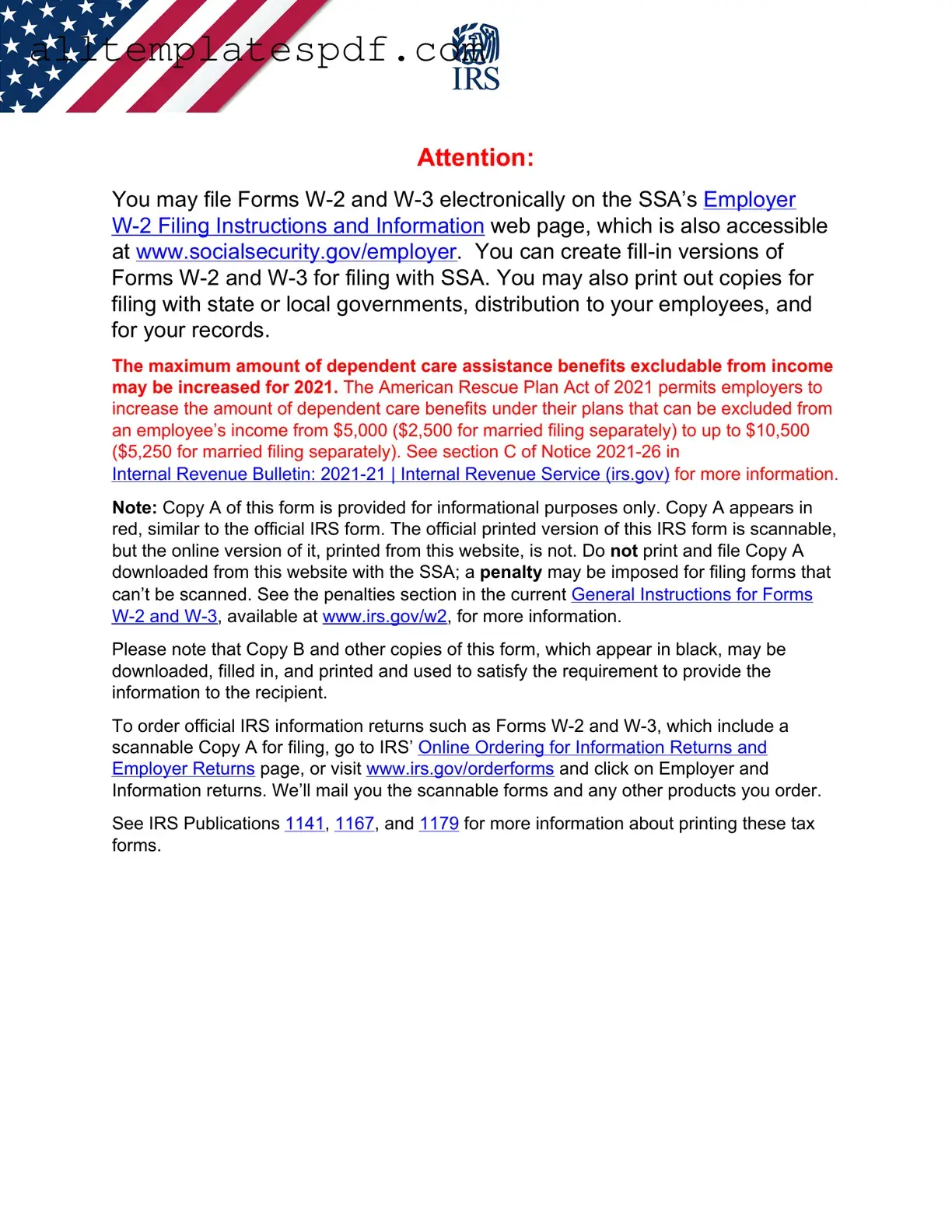Fill Out a Valid IRS W-2 Form
The IRS W-2 form is a document that employers use to report an employee's annual wages and the taxes withheld from their paycheck. This form is essential for employees when filing their tax returns, as it provides crucial information about their income and tax contributions. Make sure to fill out your W-2 form accurately by clicking the button below.
Open Editor
